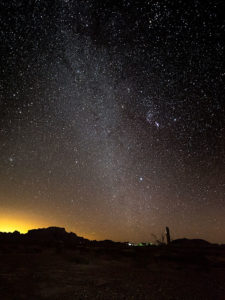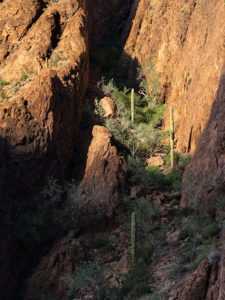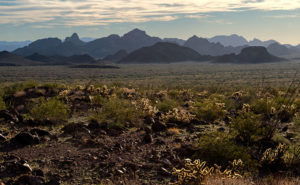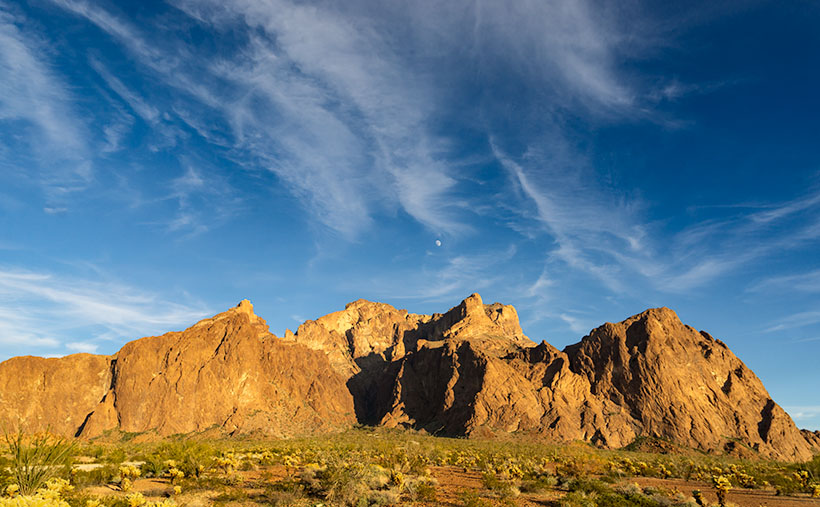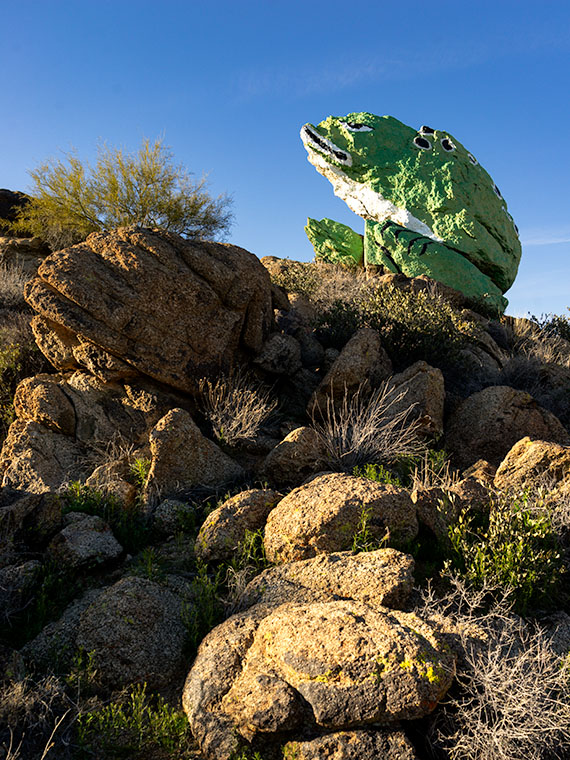
Our adopted town of Congress is a quiet retirement community these days, but it wasn’t always this sleepy. Like most of the old mining towns in Arizona, Congress was a bustling hive of activity as long as gold poured out of the ground. At its peak, the town had more people than a dusty farming village called Phoenix. But when the gold ran out, so did the reason to stick around. The land here is too rocky to farm, and there isn’t much to see—unless you’re a fan of large green amphibians.
Yes, Frog Rock puts Congress on the map. It’s not just any pile of boulders; it’s a pile of boulders that has been painted to look like a giant frog since 1928. I like to imagine that this oddball landmark sprang from the mind of Sarah Perkins, a homesteader’s wife who was bored out of her mind.
Picture a sweltering summer afternoon in 1928. Sarah is rocking on her front porch, the oppressive heat pressing down like a wet blanket. She’s sipping lukewarm lemonade and staring at the same pile of rocks she’s stared at every day for the last decade. Across the road runs US89, the main highway through town—a lifeline of commerce and travel. “Lester,” she says, her voice dripping with determination, “next time you’re in town, bring me some green paint.”
Lester, who’d been married long enough to know better than to question Sarah’s whims, nodded without so much as a grunt of inquiry. Weeks later, when he returned from Wickenburg with supplies in their rickety Model A pickup, Sarah found two cans of green paint and three sturdy brushes buried among the flour and beans.
The following day, before the heat became unbearable, Sarah gathered her sons and marched them across the road to the pile of boulders. With the determination of Michelangelo tackling the Sistine Chapel, they slapped on layer after layer of green paint. By noon, the Perkins family had created a masterpiece: a giant rock frog that gazed serenely at passing Model Ts.
Over the years, Frog Rock has become Congress’s pride and joy, our version of the world’s largest ball of twine or the giant ketchup bottle. Sure, it’s kitschy, but it’s our kitschy. When the paint fades, a self-appointed committee—armed with more enthusiasm than skill—ensures Frog Rock gets a fresh coat. On their last go-round, they even added spots to its back for extra flair.
Today, that highway is known as Arizona State Route 89, a quieter and more scenic version of its old self. Locals call it The Lost 89, a stretch of road that seems to have slipped out of time. Frog Rock has kept watch over it all through the rise and fall of mining, the rerouting of highways, and the inevitable march of progress.
When I decided to photograph Frog Rock, I wanted to capture more than just the green paint job. I wanted to show how the massive granite boulder fits into its rugged desert surroundings, so I framed it with other rocks in the foreground. The result is a tribute to Sarah’s imagination and Congress’s ability to find joy in the simple things.
If you’re ever passing through town, stop by and say hello to Frog Rock. Don’t be surprised if you feel inspired to grab a brush and add your artistic touch. After all, in Congress, anything is possible—even turning a pile of rocks into a legacy.
Until next time — jw

